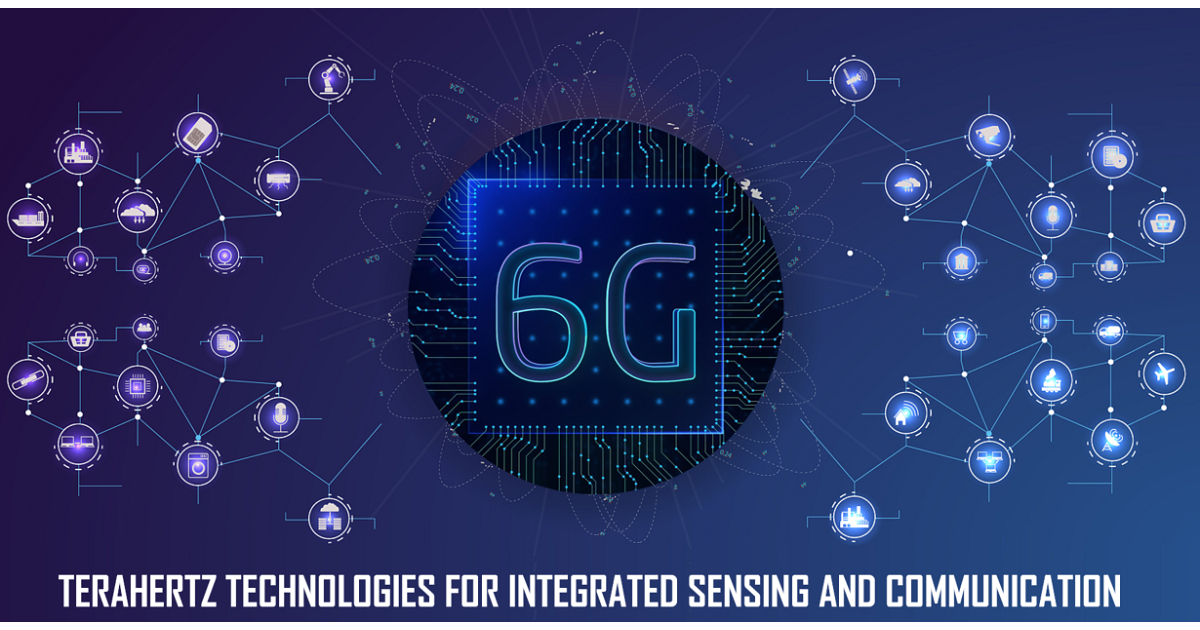Topic Menu
► Topic MenuTopic Editors



Emerging Terahertz Technologies for Integrated Sensing and Communication

Topic Information
Dear Colleagues,
The terahertz (THz) band is envisioned as one of the key technologies in supporting 6G smart lives in the future, where the biophysical world and digital world will be integrated with an intelligent connection between everything. Its characteristics, such as small device size, strong sensing ability, ultra-high data rate up to Tbit/s, and high security at the physical layer, demonstrate its potential for the integration of sensing and communication (ISAC). By unitizing software and/or hardware resources (waveform, spectrum, antenna, system, etc.), THz ISAC has shown its unique superiority in improving communication efficiency and perceptual sensitivity (positioning enhancement, posture recognition, etc.) with low resource consumption. This proposed Topic aims to capture the latest advances in terahertz techniques for the integration of sensing and communication. Review and original research articles on theoretical methods, applicative techniques, as well as new advanced methodologies for relevant scenarios, are very welcome. We hope that, by reading this Topic, that readers will understand how the terahertz band can be applied in sensing, communication and other fields.
The potential topics include, but are not limited to: Terahertz ISAC system designs; Transceivers and components for terahertz systems; New device technologies, architectures, and demonstrators for terahertz ISAC systems; Terahertz antenna systems and arrays; Ultra-massive MIMO architectures and control algorithms; Waveform design and beamforming for terahertz ISAC; THz imaging, positioning/localization, and THz spectroscopy; Ultra-broadband digital signal processing architectures and algorithms; Terahertz channel propagation and models; Health risks and evaluation for terahertz illumination; AI-assisted terahertz ISAC system design and application.
Prof. Dr. Jianjun Ma
Dr. Xiue Bao
Dr. Bin Li
Dr. Suman Mukherjee
Topic Editors
Keywords
- ISAC system
- transceiver and component
- antenna and array
- air-interface design
- waveform design
- massive mimo
- system integration
- digital signal processing
- physical-layer security
- channel modeling
- machine learning
Participating Journals
| Journal Name | Impact Factor | CiteScore | Launched Year | First Decision (median) | APC |
|---|---|---|---|---|---|

Applied Sciences
|
2.5 | 5.5 | 2011 | 19.8 Days | CHF 2400 |

Electronics
|
2.6 | 6.1 | 2012 | 16.8 Days | CHF 2400 |

Photonics
|
1.9 | 3.5 | 2014 | 14.8 Days | CHF 2400 |

Remote Sensing
|
4.1 | 8.6 | 2009 | 24.9 Days | CHF 2700 |

Technologies
|
3.6 | 8.5 | 2013 | 21.8 Days | CHF 1600 |

Preprints.org is a multidisciplinary platform offering a preprint service designed to facilitate the early sharing of your research. It supports and empowers your research journey from the very beginning.
MDPI Topics is collaborating with Preprints.org and has established a direct connection between MDPI journals and the platform. Authors are encouraged to take advantage of this opportunity by posting their preprints at Preprints.org prior to publication:
- Share your research immediately: disseminate your ideas prior to publication and establish priority for your work.
- Safeguard your intellectual contribution: Protect your ideas with a time-stamped preprint that serves as proof of your research timeline.
- Boost visibility and impact: Increase the reach and influence of your research by making it accessible to a global audience.
- Gain early feedback: Receive valuable input and insights from peers before submitting to a journal.
- Ensure broad indexing: Web of Science (Preprint Citation Index), Google Scholar, Crossref, SHARE, PrePubMed, Scilit and Europe PMC.


